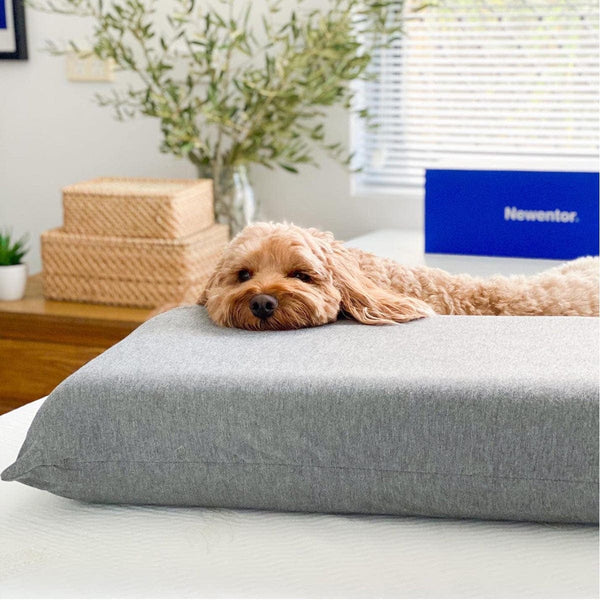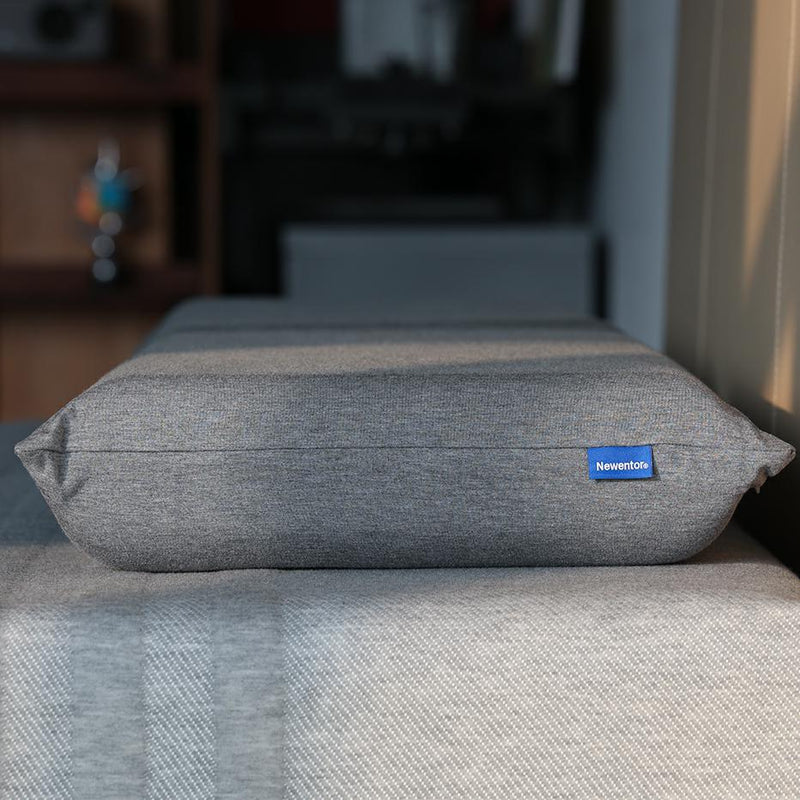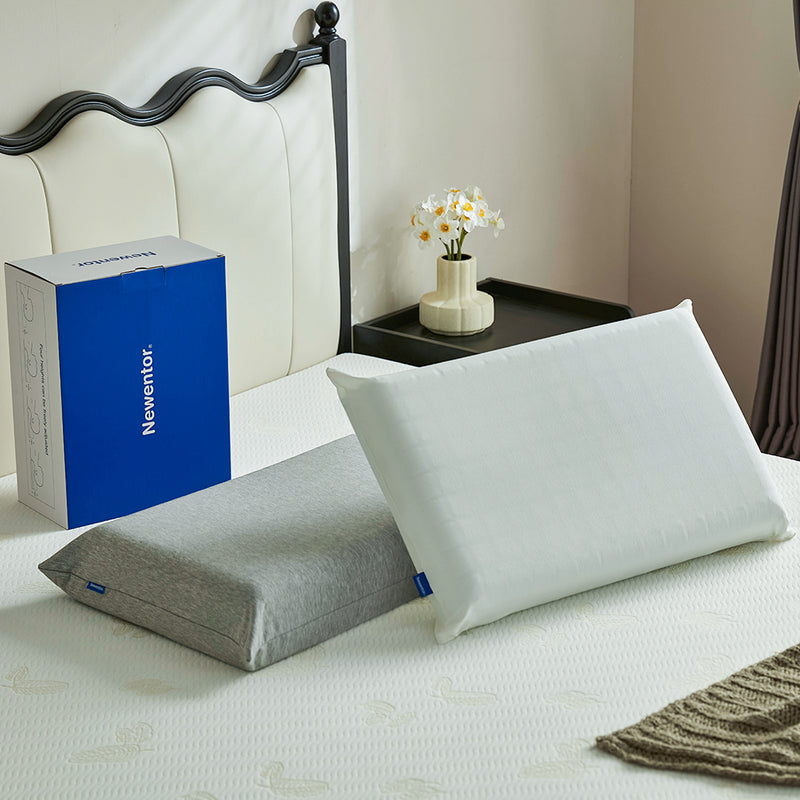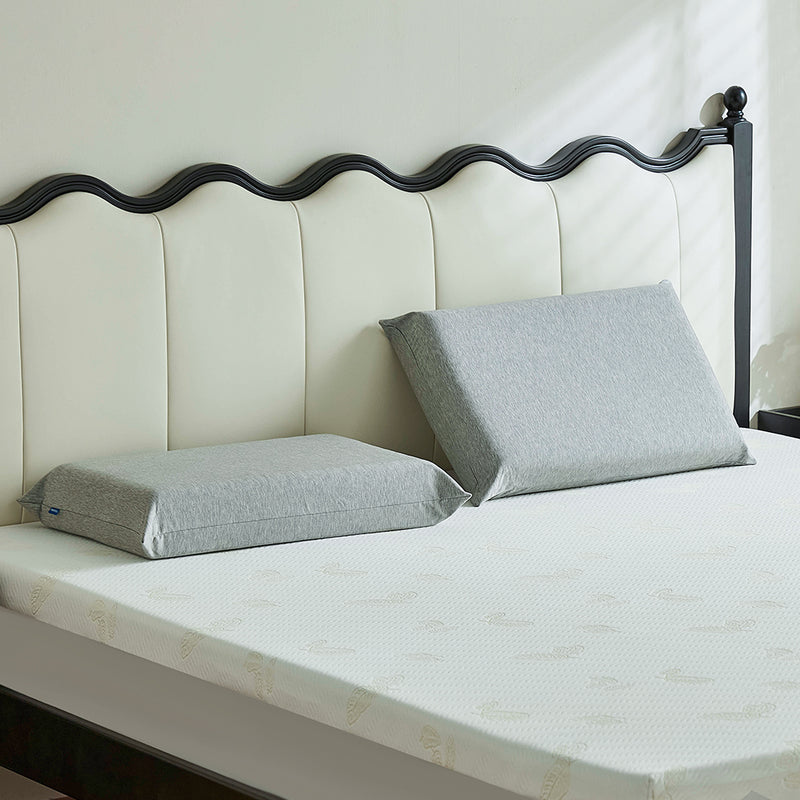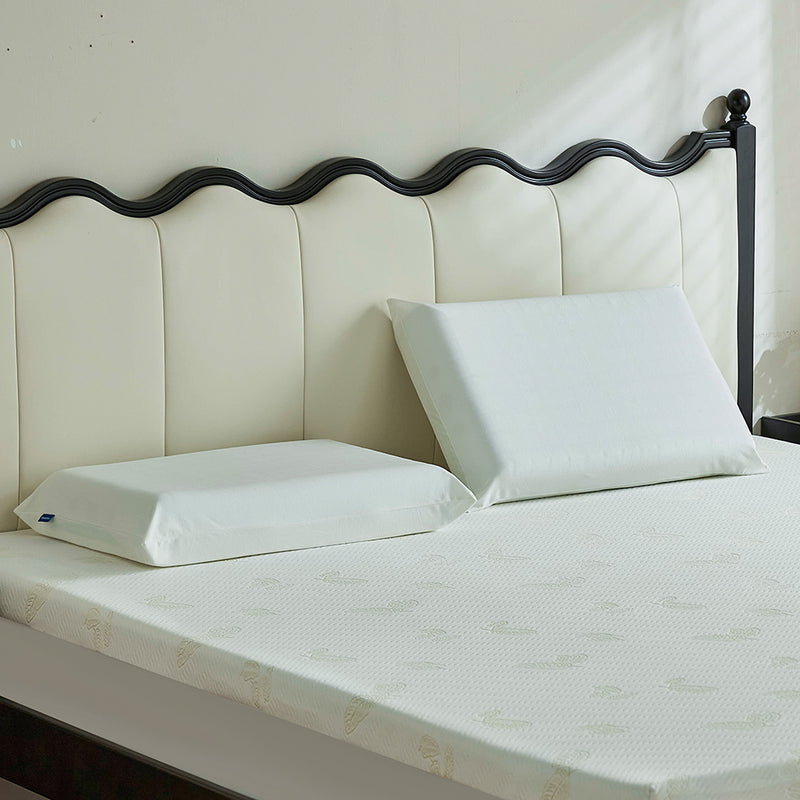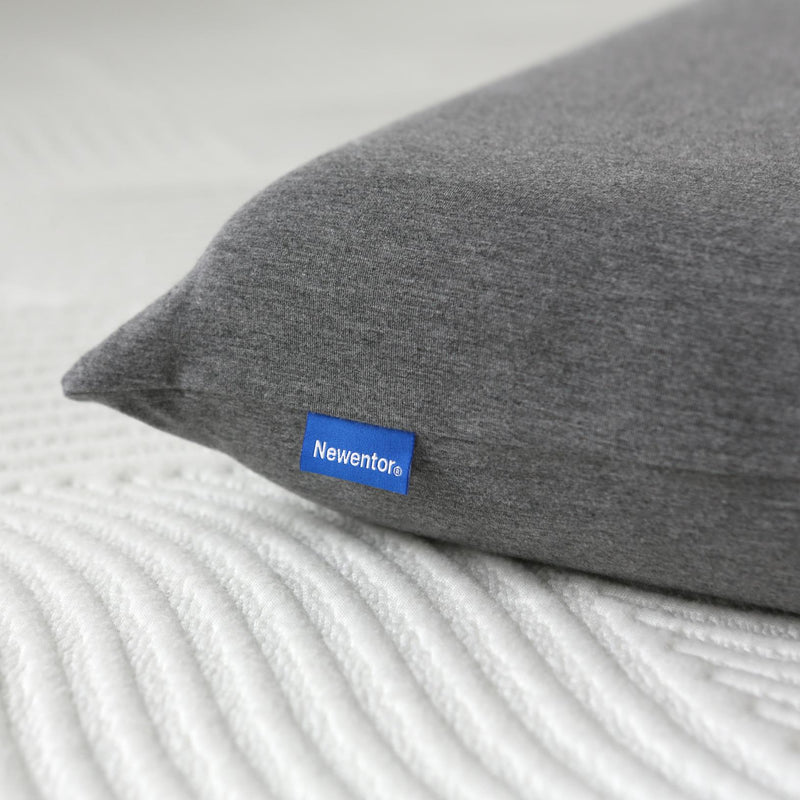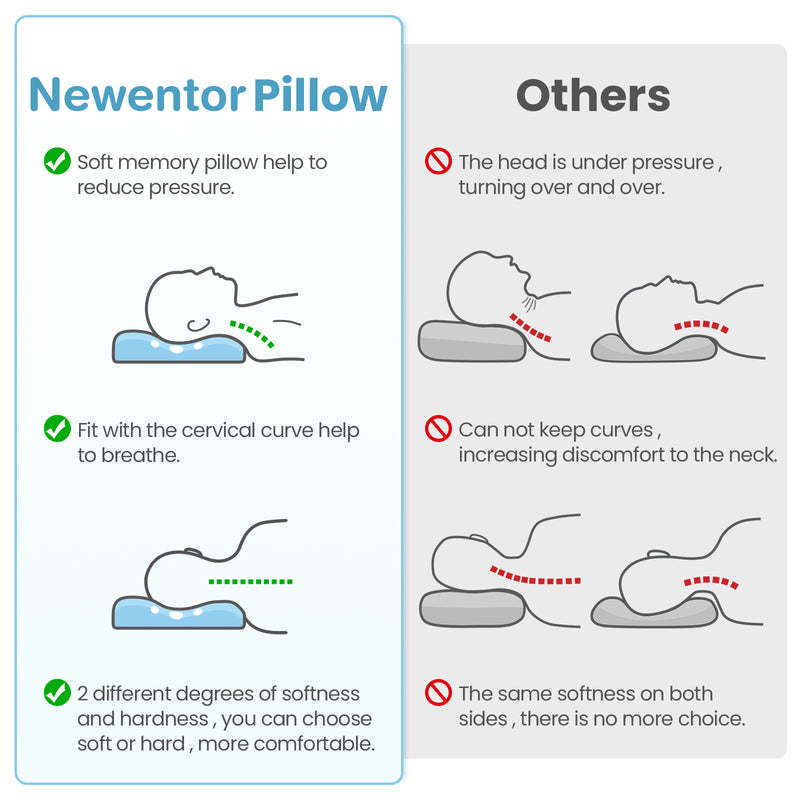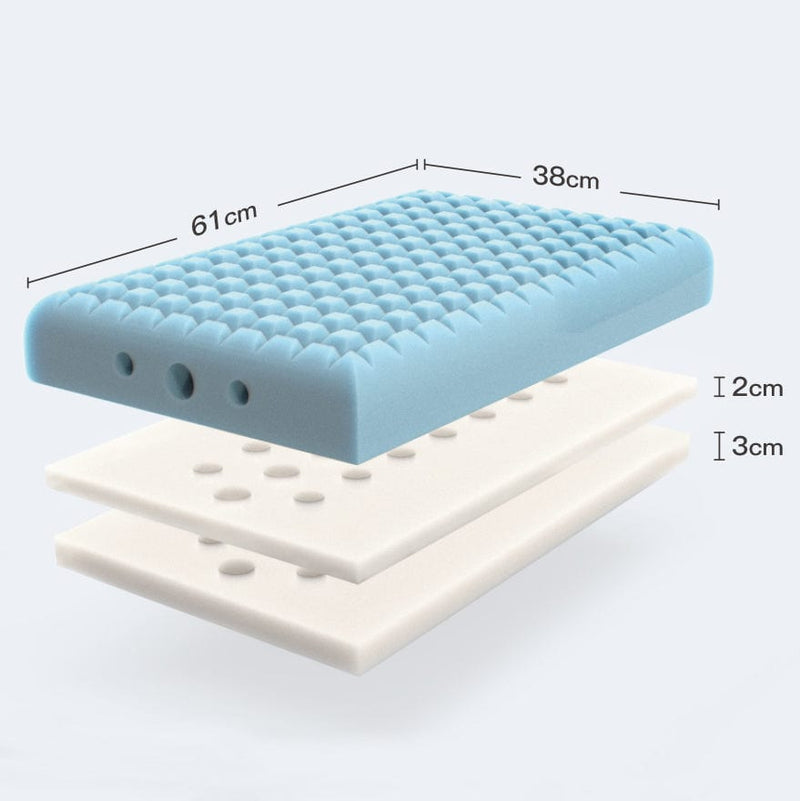Neck and shoulder pain from sleeping often arises due to poor sleep posture or inadequate pillow support. Here are the main reasons why this happens:
Best Rated Pillow for Neck Pain & Expert Tips for Relief
There’s nothing worse than waking up, ready to start the day, only to be greeted by a stiff, painful neck. If you’re nodding along, you’re not alone—that morning stiffness is an all-too-common problem.
For many, the secret to a pain-free morning isn't a new massage technique or a doctor’s visit, but simply finding the right support when you sleep.
Your old, flat, or oddly shaped cushion might be the silent culprit.
In this guide, we’ll explore why neck pain occurs, how to choose the best pillow for neck pain, and highlight the top-rated options that could help you sleep pain-free.

In this article
Why Will You Feel Neck and Shoulder Pain When Sleeping?
- Poor Pillow Support: A pillow that is too high or too low can cause your neck to bend unnaturally. When the pillow doesn’t keep your head, neck, and spine aligned, it can lead to muscle strain and discomfort, especially in the neck and shoulder area. If you don't know what pillow firmness are best for yourself, check out this firmness of pillows guide.
-
Incorrect Sleeping Positions: The way you sleep plays a significant role in preventing or causing neck and shoulder pain. For example:
- Side Sleepers: If the pillow is too thin or too thick, your neck may be misaligned with your spine, leading to tension and discomfort.
- Back Sleepers: A pillow that doesn’t support the natural curve of the neck can cause strain.
- Stomach Sleepers: Sleeping on your stomach forces your neck into a strained position, often resulting in pain in the neck and shoulders.
- Spinal Alignment: The spine has natural curves (lordotic and kyphotic curves), and maintaining these curves during sleep is crucial for preventing pain. Poor alignment can put pressure on the spine, leading to discomfort, especially in the neck and shoulders.
- Muscle Tension: Tension from stress, poor posture during the day, or extended hours in front of a screen can make your neck and shoulder muscles tight. When you sleep, these tight muscles remain contracted, which can lead to pain when you wake up.
- Old or Unsupportive Mattresses: A mattress that is too soft or too firm can also contribute to neck and shoulder pain. It’s essential for your mattress to provide adequate support, keeping your spine in a neutral position while you sleep.
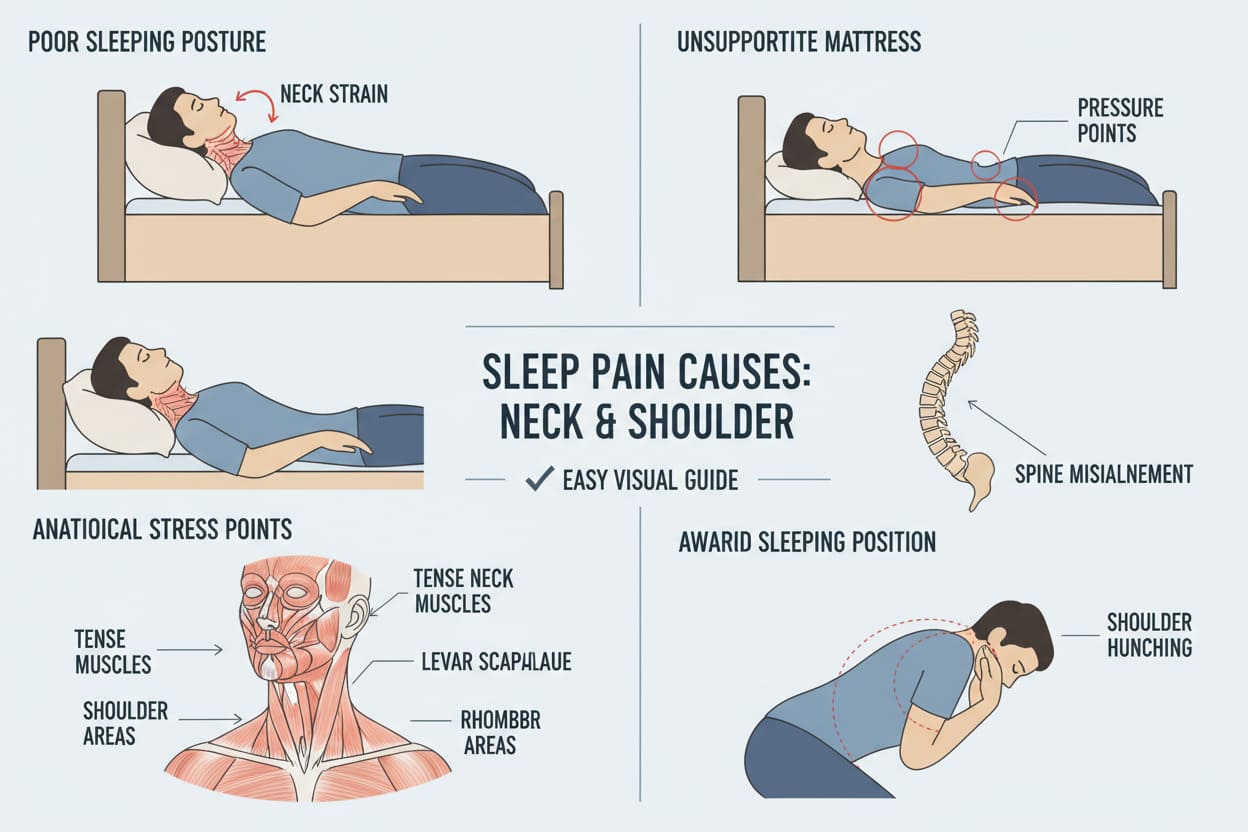
A mattress like the Newentor ergonomic hybrid mattress can help ensure your spine follows its natural curve, providing optimal support for all sleeping positions. It adapts to your body, helping to relieve pressure points and promote better spinal alignment for a more comfortable and pain-free sleep.
The right pillow and sleep position are crucial for minimizing strain on the neck and shoulder muscles, ensuring proper alignment, and reducing the likelihood of waking up with pain.
How to Choose the Best Pillow for Neck Pain?
1. Consider Your Sleeping Position
Your preferred sleep position significantly influences the type of pillow that will provide optimal support:
- Side Sleepers: A firmer, thicker pillow helps keep your head and neck in line with your spine.
- Back Sleepers: A medium-loft or contoured memory foam pillow is ideal for supporting the natural curve of your neck while keeping your spine aligned.
- Stomach Sleepers: A soft, low-loft pillow can help maintain spinal alignment, but this sleep position is generally not recommended for neck health.
2. Choose the Right Pillow Material
The material of your pillow affects its support and comfort:
- Memory Foam: Molds to the shape of your head and neck, providing personalized support.
- Latex: Offers firm support and durability, with natural hypoallergenic properties.
- Feather/Down: Provides a soft feel but may lack adequate support for those with neck pain.
- Cervical Pillows: Specifically designed to support the neck's natural curve, beneficial for those with chronic neck pain.
3. Adjustability and Loft
- Adjustable Pillows: Allow you to add or remove filling to achieve the desired height and firmness.
- Loft: The pillow's height should fill the gap between your head and mattress, keeping your neck aligned with your spine.
4. Consider Pillow Maintenance
- Removable and Washable Covers: Ensure hygiene and longevity of the pillow.
- Hypoallergenic Materials: Reduce the risk of allergies and respiratory issues.
Top Rated Pillows for Neck Pain
Newentor Adjustable Memory Foam Pillow for Neck Pain
The Newentor Adjustable Memory Foam Pillow is designed to provide customized support, featuring two memory foam pads—one 2cm and one 3cm in height—that allow you to easily adjust the pillow’s loft to your ideal comfort level. With four different height combinations, it offers personalized support, whether you're a side sleeper in need of extra elevation or a back sleeper seeking moderate support.
This pillow is perfect for those dealing with neck pain, individuals who shift sleeping positions throughout the night, or couples with varying preferences. Whether you want to relieve pressure points, enhance spinal alignment, or experience plush comfort, the Newentor pillow adapts to meet your unique needs, ensuring a restful and rejuvenating sleep each night.

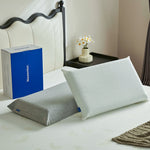
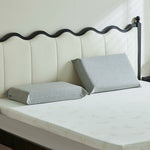
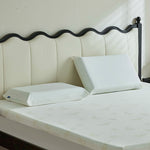


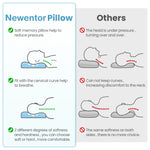
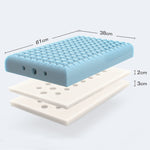
- CertiPUR-US & OEKO-TEX certified for quality and safety, with no chemical smells.
- 2 adjustable height pads offer four distinct pillow heights, ensuring personalized comfort for any sleep position.
- Ergonomic Contour: The contoured design lifts the head and neck to ensure proper alignment and promote muscle relaxation.
- Breathable 3D structure encourages heat and moisture to disperse from the pillow surface.Select 80 more words to run Humanizer.
- 120 nights free trial & 10 years warranty.
What Our Pillows Compare to Others

Additional Tips for Neck Pain Relief While Sleeping
1. Check Your Mattress Quality:
A worn-out or overly soft mattress can cause your torso to sink, throwing your entire spinal column (including your neck) out of alignment, no matter how good your pillow is. Ensure your mattress provides adequate, medium-firm support to keep your body level. If your mattress is over 7-10 years old and noticeably sagging, it might be the underlying issue.
2. Use a Knee Pillow for Side Sleepers:
When you sleep on your side, your top leg can pull your pelvis and lower spine out of alignment. This rotation often travels up the spine and affects your neck. Place a firm pillow or a dedicated knee pillow between your knees. This keeps your hips and spine stacked correctly, which in turn helps your neck stay in a neutral position.
3. Keep Your Arms in a Neutral Position:
Never tuck your arm under your pillow or your head. This drastically raises the height of the pillow, over-flexing your neck, and can also compress nerves in your shoulder and arm. Keep your arms resting naturally at your sides or gently bent in front of you.
4. Try a Towel Roll for Back Sleepers:
If your current pillow isn't providing enough support for the curve of your neck (the cervical spine), roll up a small hand towel lengthwise. Place this towel roll inside your pillowcase, right at the bottom edge, so it tucks into the hollow of your neck. This temporary fix supports the neck's natural curve while allowing the head to rest comfortably on the softer part of the pillow.
5. Stretch Before Bed
Gentle neck stretches or exercises can help relieve muscle tension and prepare your neck for sleep. Try some light stretching of your neck muscles, like tilting your head from side to side, before going to bed.
By combining these tips with a well-chosen pillow for neck pain, you can create a complete sleep environment optimized for spinal and neck health.
FAQs about Pillow and Neck Pain
Is it better to sleep with or without a pillow when you have neck pain?
The choice between using a pillow or not largely depends on your sleeping position and individual comfort.
- Stomach Sleepers: Sleeping without a pillow can help reduce neck strain, as it prevents the head from being tilted backward. However, this position is generally not recommended due to potential spinal misalignment.
- Back and Side Sleepers: Using a pillow that supports the natural curve of your neck is crucial. A pillow that keeps your neck aligned with your spine can alleviate pressure and reduce pain.
What is the proper pillow to avoid neck pain?
The ideal pillow for preventing neck pain should:
- Maintain Spinal Alignment: Ensure that your neck is aligned with your spine to prevent strain.
-
Suit Your Sleeping Position:
- Back Sleepers: Opt for a medium-loft pillow that supports the natural curve of your neck.
- Side Sleepers: Choose a firmer, thicker pillow to fill the gap between your head and the mattress, keeping your neck aligned.
- Provide Adequate Support: The pillow should support the weight of your head without tilting it forward or backward.
Materials like memory foam, latex, or cervical pillows are often recommended for their supportive properties.
What is the best pillow to prevent neck pain in side sleepers?
For side sleepers, the best pillow should provide enough loft to fill the gap between the head and the mattress, ensuring that the neck and spine remain aligned.
Botton Lines
Choosing the best pillow for neck pain isn’t always easy, but with the right information, you can make an informed decision that helps relieve discomfort and ensures a restful night’s sleep.
With Newentor memory foam pillow, you can say goodbye to neck pain and wake up feeling refreshed and ready to take on the day!
Newentor Adjustable Memory Foam Pillow
